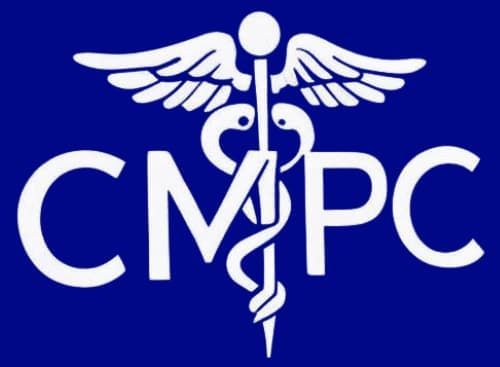
In today's fast-paced world, the promise of quick weight loss through supplements and diet pills can be incredibly tempting. These products line pharmacy shelves with bold claims about appetite suppression accelerated fat burning, and metabolism boosting. But do they deliver on these promises? And more importantly, are they the right choice for your weight loss journey?
If you've been considering weight loss supplements, you're not alone. Millions of people turn to these products yearly, hoping to find that extra edge in their battle against unwanted kilos. Understanding how these supplements work and their limitations is essential for making informed decisions about your health and weight management strategy.
Click inside:

Types of Weight Loss Supplements and How They Work
The weight loss supplement market offers a variety of products, each working through different mechanisms to potentially support weight loss efforts. Let's explore the main categories:
1. Appetite Suppressants
- Reduce hunger signals and food cravings
- Help maintain calorie deficits more comfortably
- Common ingredients: Glucomannan, Garcinia Cambogia, 5-HTP
Appetite suppressants attempt to address one of the most challenging aspects of weight loss: managing hunger. They work by physically filling space in your stomach or influencing brain chemistry related to hunger and satiety.
Glucomannan, a dietary fibre derived from the konjac root, expands in your stomach when it contacts water, creating a feeling of fullness that may help you eat less at meals. This natural fibre has shown modest effectiveness in clinical studies, particularly when taken before meals as part of a reduced-calorie diet.
Garcinia Cambogia contains hydroxy citric acid (HCA), which some research suggests may increase serotonin levels in the brain, potentially reducing emotional eating and curbing appetite. While initial studies showed promise, more recent research has yielded mixed results.
5-HTP (5-hydroxytryptophan) is a compound that your body converts into serotonin, potentially helping regulate mood and appetite. Some small studies suggest it may help reduce cravings, particularly for carbohydrate-rich foods, though more research is needed to confirm these effects.
When considering appetite suppressants, remember that they work best as tools within a comprehensive approach that includes mindful eating practices and addressing emotional triggers for eating.
2. Fat Burners (Thermogenics)
- Increase metabolic rate and calorie expenditure
- Enhance fat oxidation during rest and activity
- Common ingredients: Caffeine, green tea extract, capsaicin
Thermogenic supplements raise your body's core temperature slightly, potentially increasing the calories burned throughout the day. These products typically contain stimulants and compounds that may enhance the body's natural fat-oxidation processes.
Caffeine is perhaps the most well-researched ingredient in this category, with studies showing it can temporarily increase metabolic rate by 3-11% and enhance fat burning by up to 13% in some individuals. As a central nervous system stimulant, it also provides energy that may support more active lifestyles.
Green tea extract combines caffeine with catechins (particularly EGCG), which some research suggests may synergistically boost metabolism and increase fat oxidation. The effects are generally modest but may add up over time when combined with diet and exercise.
In some studies, Capsaicin, the compound that gives chilli peppers their heat, has shown potential to increase energy expenditure and fat oxidation. It may also help reduce appetite slightly, offering a dual-action approach to weight management.
While fat burners may provide a slight metabolic advantage, their effects are typically modest, perhaps an extra
100-200 calories burned daily, and tend to diminish as your body tolerates the stimulants.
3. Fat Blockers
- Inhibit fat digestion and absorption in the intestines
- Reduce calorie intake without dietary changes
- Common ingredients: Orlistat (FDA-approved), chitosan
Fat blockers work by inhibiting lipase, the digestive enzyme responsible for breaking down dietary fats. When fat isn't properly digested, it passes through your system without absorption, potentially reducing your overall calorie intake by 25-30%.
Orlistat (sold under brand names Alli and Xenical) is the most studied fat blocker and the only one approved by major regulatory bodies for weight loss. When taking the recommended dose with meals containing fat, Orlistat can block roughly a quarter of the fat you consume from being absorbed.
Chitosan, derived from shellfish exoskeletons, binds to fatty acids in the digestive tract. While some studies show modest effects on fat absorption, others have found little benefit, making it less reliable than Orlistat.
The downside to fat blockers?
They can cause uncomfortable digestive side effects, including oily spotting, loose stools, and even fecal incontinence, particularly when consuming high-fat meals. Despite any potential benefits, many users find these side effects troublesome enough to discontinue.
4. Carbohydrate Blockers
- Inhibit enzymes that digest complex carbohydrates
- Reduce the caloric impact of starchy foods
- Primary ingredient: White kidney bean extract
Carbohydrate blockers target alpha-amylase, an enzyme that breaks down complex carbohydrates into absorbable sugar molecules. These supplements aim to reduce the caloric impact of starchy foods like pasta, rice, and potatoes by inhibiting this enzyme.
White kidney bean extract (Phaseolus vulgaris) is the primary ingredient in most carb blockers. Research suggests it may reduce carbohydrate absorption by up to 66% before carbohydrate-rich meals, though real-world effectiveness appears more modest.
It's important to understand that carb blockers only affect complex carbohydrates and do not impact simple sugars found in sweets, fruits, and many processed foods. This limitation means they're most effective for individuals with diets high in starchy foods rather than sugary ones.
Like fat blockers, carb blockers can cause digestive discomfort, including gas, bloating, and diarrhea, as undigested carbohydrates ferment in the large intestine.
5. Metabolism Boosters
- Support metabolic processes at the cellular level
- May improve overall metabolic efficiency
- Common ingredients: L-carnitine, chromium, green coffee bean extract
Metabolism boosters enhance your body's natural processes for converting food into energy. Unlike stimulant-based fat burners, these supplements typically optimize metabolic pathways rather than temporarily accelerate them.
L-carnitine, an amino acid derivative, helps transport fatty acids into cell mitochondria, which can be burned for energy. While this mechanism sounds promising, research in healthy individuals shows minimal effects on weight loss, though some benefits may exist for specific populations like older adults.
Chromium, a trace mineral, supports insulin function and may improve how your body processes carbohydrates. Some studies suggest it may help reduce food intake and cravings, particularly for carbohydrates, though effects are generally minor.
Green coffee bean extract contains chlorogenic acid, which some research suggests may reduce carbohydrate absorption and improve fat metabolism. Studies show modest weight loss benefits, though more high-quality research is needed.
The reality is that your metabolic rate is primarily determined by factors you can't easily change, body composition, age, genetics, and hormonal health. While these supplements may offer small benefits, the most effective way to support metabolism is to build muscle through strength training and stay physically active.
Scientific Evidence Behind Weight Loss Supplements
When evaluating weight loss supplements, scientific evidence should be your north star. Here's what current research tells us about some of the most studied ingredients:
1. Caffeine and Green Tea Extract
The research on these stimulants shows:
- Temporary metabolic enhancement of 3-11%
- Modest fat oxidation increases
- Effects that diminish over time due to tolerance
A meta-analysis of 49 studies found that caffeine combined with green tea catechins produced an average weight loss of 1.3 kg (2.9 lbs) more than placebo over 12-13 weeks. While statistically significant, this represents a small contribution to overall weight loss for most individuals.
Individual responses vary considerably based on genetics and habitual caffeine consumption. Some people experience greater benefits, while others see almost no effect, highlighting the importance of personalized approaches to weight management.
The stimulant effects also tend to diminish over time as your body develops tolerance, meaning the initial boost may not be sustained with continued use.
2. Glucomannan (Konjac Root)
This soluble fibre has gained attention for its potential weight loss properties:
- Creates physical fullness by absorbing water
- May reduce overall calorie intake
- Offers additional health benefits for cholesterol and blood sugar
Research on glucomannan shows it can produce modest weight loss when combined with a healthy diet. A review of clinical trials found that doses of 2-4 grams daily resulted in small but statistically significant weight loss compared to placebo.
Beyond weight management, glucomannan may offer additional health benefits, including improved cholesterol profiles and better blood sugar control, making it a multifunctional supplement worth considering.
3. Orlistat (Alli, Xenical)
As the only FDA-approved over-the-counter weight loss medication:
- Clinically proven to block 25-30% of dietary fat absorption
- Results in modest weight loss of 2-3% more than diet and exercise alone
- Effectiveness well-documented in multiple large-scale clinical trials
In studies lasting 1-2 years, participants taking Orlistat typically lost 2-3% more of their body weight than those taking a placebo. For a 100 kg individual, that translates to an additional 2-3 kg (4.4-6.6 lbs) of weight loss, modest but potentially meaningful for health markers like blood pressure and blood sugar.
The medication works best with a reduced-calorie, moderately low-fat diet (around 30% of calories from fat). This dietary approach also helps minimize the unpleasant digestive side effects that lead many users to discontinue the medication.
Despite having the most substantial evidence among weight loss supplements, Orlistat's modest benefits and potential side effects highlight the limitations of the supplement approach to weight management.
Potential Risks and Side Effects
While supplements may offer some benefits, they aren't without risks. Understanding potential side effects can help you make informed decisions:
1. Gastrointestinal Issues
- Digestive discomfort and bloating
- Loose stools and diarrhoea
- Oily spotting and fecal urgency (with fat blockers)
Fat blockers like Orlistat frequently cause digestive disturbances when dietary fat passes through the system undigested. These effects can range from mild discomfort to embarrassing situations that significantly impact quality of life.
Fibre-based supplements like glucomannan can cause initial bloating and gas, though these symptoms typically subside as your body adjusts. Staying well-hydrated is essential when taking fibre supplements to prevent constipation and ensure proper expansion in the stomach rather than the esophagus.
For many individuals, these side effects outweigh the modest benefits, leading to poor adherence and discontinued use, a primary reason why supplement-based approaches often fail long-term.
2. Increased Heart Rate and Anxiety
- Jitteriness and nervous system stimulation
- Heart palpitations and elevated blood pressure
- Sleep disturbances and insomnia
Stimulant-based supplements containing caffeine, synephrine, or other stimulants can significantly impact your cardiovascular and nervous systems. For individuals sensitive to stimulants or those with underlying heart conditions, these effects can range from uncomfortable to potentially dangerous.
Multiple weight loss supplements have been removed from the market due to cardiovascular risks, including those containing ephedra and certain amphetamine-like compounds. Even legal stimulants like caffeine can cause problems when consumed in high doses or combined with other stimulants.
If you experience a racing heartbeat, significant anxiety, or sleep disturbances after starting a weight loss supplement, discontinue use and consult a healthcare provider promptly.
3. Nutrient Deficiencies
- Reduced absorption of fat-soluble vitamins (A, D, E, K)
- Potential mineral imbalances
- Interference with medication absorption
Orlistat can reduce the absorption of essential fat-soluble vitamins, potentially leading to deficiencies without proper supplementation. Healthcare providers typically recommend taking a multivitamin at least two hours before or after Orlistat to ensure adequate nutrient intake.
Some weight loss supplements may also bind to minerals in the digestive tract or alter their absorption, potentially affecting overall nutritional status, particularly during extended use.
3. Nutrient Deficiencies
- Reduced absorption of fat-soluble vitamins (A, D, E, K)
- Potential mineral imbalances
- Interference with medication absorption
Orlistat can reduce the absorption of essential fat-soluble vitamins, potentially leading to deficiencies without proper supplementation. Healthcare providers typically recommend taking a multivitamin at least two hours before or after Orlistat to ensure adequate nutrient intake.
Some weight loss supplements may also bind to minerals in the digestive tract or alter their absorption, potentially affecting overall nutritional status, particularly during extended use.
Benefits of Weight Loss Surgeries
- Significant and sustainable weight loss
- Improvement or resolution of obesity-related conditions
- Enhanced quality of life
- Increased longevity
- Reduced healthcare costs over time
The benefits of bariatric surgery extend well beyond weight loss itself. Many patients experience complete resolution of type 2 diabetes, with some studies showing remission rates of 80-90% for gastric bypass patients. Hypertension improves in more than 70% of patients, and sleep apnea resolves in over 80%.
Beyond these measurable health improvements, patients often report significant enhancements in quality of life, including better mobility, reduced pain, improved mood, enhanced self-confidence, and greater participation in social and physical activities.
Research has also demonstrated that bariatric surgery can increase life expectancy in individuals with severe obesity, primarily by reducing the risk of cardiovascular events and cancer.
Understanding Gastric Balloons
For those seeking less invasive alternatives to surgery, gastric balloons offer a promising option. These devices temporarily aid weight loss through a minimally invasive procedure that doesn't permanently alter the digestive tract.
How Gastric Balloons Work
- Temporary space-occupying devices
- Reduce stomach capacity without surgery
- Create earlier feelings of fullness
- Typically remain in place for 4-6 months
- Combine with lifestyle modification programs
Gastric balloons are soft, silicone devices placed in the stomach and then filled with saline solution (or sometimes air), occupying space and creating a feeling of fullness. This helps patients eat smaller portions and feel satisfied with less food.
One of the most innovative options today is the Allurion Gastric Balloon Program, which offers a non-invasive approach. Unlike traditional balloons that require endoscopy for placement and removal, the Allurion balloon comes in a swallowable capsule. Once in the stomach, it's filled with saline through a thin catheter that is then removed. After approximately 16 weeks, the balloon automatically deflates and passes naturally through the digestive system.
Gastric balloons are designed to be temporary interventions, typically remaining in place for 4-6 months. It makes them ideal for individuals who need help establishing new eating habits but don't require or desire a permanent surgical solution.
Most balloon programs combine the device with comprehensive lifestyle support, including nutritional counselling, behaviour modification, and exercise guidance. This integrated approach helps patients develop sustainable habits to lose weight after removing the balloon.
Benefits of Gastric Balloons
- Non-surgical procedure with minimal recovery time
- Temporary intervention with no permanent changes
- Effective bridge to lifestyle modification
- Lower cost compared to surgical options
- Suitable for lower BMI ranges than surgery
The primary advantage of gastric balloons is their non-surgical nature, eliminating many of the risks associated with bariatric surgery. Most patients return to work and normal activities within 1-3 days after placement, compared to weeks of recovery following surgery.
Their temporary nature makes balloons an excellent option for individuals who are hesitant about permanent anatomical changes or who want to "test drive" the feeling of restricted stomach capacity before considering surgery.
Gastric balloons typically result in 10-15% total body weight loss during treatment, which can significantly improve obesity-related health conditions and motivate continued lifestyle changes.
Additionally, balloons are generally more affordable than surgical options. They may be suitable for patients with BMIs in the 27-35 range who don't qualify for bariatric surgery but still need intervention beyond diet and exercise alone.
Safety of Gastric Balloons
Gastric balloons are considered a safe and effective weight loss option with minimal risk compared to surgical alternatives. Their temporary nature and the absence of surgical incisions contribute to their favourable safety profile.
Short-term Effects
- Nausea and vomiting during the adjustment period
- Abdominal discomfort or cramping
- Acid reflux or heartburn
- Difficulty sleeping comfortably
- Feeling of heaviness in the abdomen
The first few days after balloon placement often involve an adjustment period as the body gets used to having the device in the stomach. Nausea and vomiting are common during this time but typically resolve within 3-7 days with proper medication management.
Some patients experience acid reflux or heartburn, which can usually be managed with proton pump inhibitors or other acid-reducing medications. Changes in sleeping position may be necessary to accommodate the feeling of fullness or pressure in the abdomen.
These initial discomforts are generally well-tolerated and short-lived, with most patients adapting to the balloon within a week and experiencing few issues for the remainder of the treatment.
Rare Complications
- Balloon deflation before scheduled removal
- Balloon migration causing obstruction
- Gastric ulcers or erosions
- Persistent intolerance requiring early removal
- Esophageal or gastric perforation (extremely rare)
While serious complications with gastric balloons are rare, they can occur. Spontaneous balloon deflation happens in a small percentage of cases. If the balloon is filled with a coloured dye solution, this will cause the patient's urine to change colour, alerting them to seek medical attention. With the Allurion balloon, deflation is part of the normal process at the end of treatment.
Migration of a deflated balloon can potentially cause intestinal obstruction, though this is extremely rare with modern balloons. Similarly, gastric ulcers or erosions can develop where the balloon contacts the stomach lining, but this risk is minimized through proper monitoring and medication.
In some cases, patients may experience persistent intolerance to the balloon despite medication management, necessitating early removal. However, this occurs in less than 5% of patients with newer balloon designs.
The most serious complications, such as gastric perforation, are exceedingly rare (less than 0.01%) and typically associated with pre-existing gastric conditions or improper placement.
Comparing the Safety of Surgeries and Balloons
When considering weight loss interventions, it's helpful to understand how surgical and non-surgical options compare across various factors:
Key Comparison Factors
1. Invasiveness
- Weight Loss Surgery: High (requires general anesthesia, surgical incisions, and permanent anatomical changes)
- Gastric Balloons: Low (typically an outpatient procedure with no incisions or permanent changes)
The stark difference in invasiveness between these options is a primary consideration for many patients. Surgical procedures require general anesthesia, carry the risks associated with any major surgery, and make permanent changes to the digestive tract. Gastric balloons, particularly newer options like the swallowable Allurion balloon, require minimal or no sedation and make no permanent changes to your body.
2. Recovery Time
- Weight Loss Surgery: Weeks to months (2-4 weeks before returning to normal activities)
- Gastric Balloons: Few days to a week (most patients resume normal activities within 1-3 days)
Recovery after bariatric surgery involves a staged diet progression over several weeks, restrictions on physical activity, and typically 1-2 weeks away from work. Balloon patients generally experience only a few days of adjustment symptoms before returning to normal routines, though dietary modifications are still recommended throughout the treatment period.
3. Risk Level
- Weight Loss Surgery: Moderate to high (includes surgical complications and long-term nutritional concerns)
- Gastric Balloons: Low to moderate (primarily short-term discomfort with rare serious complications)
The risk profile of surgical interventions naturally includes both general surgical risks and procedure-specific complications. While modern surgical techniques have greatly improved safety, these procedures still carry higher risks than non-surgical alternatives. Gastric balloons pose risks during the adjustment period, with serious complications exceedingly rare.
4. Effectiveness
- Weight Loss Surgery: Long-term, significant weight loss (50-80% of excess weight)
- Gastric Balloons: Temporary, moderate weight loss (10-15% of total body weight)
Bariatric surgery offers more dramatic and typically more durable weight loss results. However, balloons can still provide clinically significant weight reduction that improves health markers, especially with comprehensive lifestyle support. For many patients, the moderate weight loss achieved with a balloon is sufficient to enhance the quality of life and reduce obesity-related health risks.
5. Cost
- Weight Loss Surgery: Higher (US $15,000-$25,000 depending on procedure and location)
- Gastric Balloons: Lower (US $6,000-$9,000 for the complete program)
The financial aspect cannot be overlooked when comparing these options. Even with potential insurance coverage, surgical options represent a significant investment. Balloons typically cost less than half the surgery price, though they may be less likely to be covered by insurance.
Who Should Consider These Options?
Understanding which intervention might be proper depends on several factors, including your BMI, health status, weight loss goals, and personal preferences regarding invasiveness and permanence.
1. Candidates for Weight Loss Surgery
- BMI of 40 or higher (or BMI of 35+ with obesity-related conditions)
- History of failed weight loss attempts with conventional methods
- No medical or psychological contraindications to surgery
- Understanding lifelong lifestyle changes required
- Commitment to long-term follow-up care
Bariatric surgery is typically recommended for individuals with severe obesity (BMI ≥40) or those with a BMI ≥35 who also have conditions like type 2 diabetes, hypertension, or sleep apnea. These criteria reflect the point at which the health benefits of surgery outweigh the risks for most patients.
Candidates should have attempted other weight loss methods and understand that surgery is a tool that requires significant lifestyle changes to be successful long-term. They should also be prepared for the nutritional monitoring and supplementation necessary for life.
Certain medical conditions may make surgery too risky, and psychological readiness is essential for adapting to the profound changes that follow these procedures.
2. Candidates for Gastric Balloons
- BMI between 27 and 40
- No previous stomach or esophageal surgery
- Willingness to participate in a supervised weight loss program
- No active gastric ulcers or inflammatory intestinal conditions
- Not pregnant or planning pregnancy during the treatment period
Gastric balloons serve a broader range of individuals, including those with lower BMIs who don't qualify for surgery but struggle to lose weight through conventional methods alone. They're particularly well-suited for individuals seeking a jumpstart to their weight loss journey or those who need help establishing portion control.
Balloons are also an excellent option for patients who are hesitant about surgery or have medical conditions that make surgery too risky. They can serve as a "bridge" therapy for super-obese patients (BMI >50) to help them lose enough weight to make subsequent surgery safer.
The ideal balloon candidate is committed to making lifestyle changes during treatment to maximize results and maintain them after removing the balloon.
Key Takeaways
- Both options have firm safety profiles when performed by qualified professionals and accompanied by proper follow-up care.
- Surgical interventions offer dramatic, long-term results but involve more significant risks and extensive recovery.
- Gastric balloons provide a less invasive, reversible solution with fewer risks and quicker recovery.
- These options should be individualized, considering medical factors, personal preferences, and weight loss goals.
- Comprehensive programs that include lifestyle support maximize success with either approach.
Finally…
Weight loss surgeries and gastric balloons are safe and effective options for individuals seeking to manage their weight more effectively when diet and exercise alone haven't yielded sufficient results. Modern advancements in both surgical techniques and non-surgical devices have greatly improved the safety profiles of these interventions.
The choice between surgical and non-surgical approaches depends on various factors, including your BMI, health status, weight loss goals, and comfort with different levels of intervention. For many patients, gastric balloons offer an attractive middle ground—more effective than conventional methods but less invasive than surgery.
At CMPC, we understand that choosing a weight loss intervention is a significant decision that requires thorough information and personalized guidance. Our team of experienced weight management specialists provides comprehensive assessments to help determine which approach might best suit your unique situation.
We invite you to schedule a FREE consultation to discuss your weight loss goals and explore whether weight loss surgery or the Allurion Gastric Balloon Program might be appropriate for you. During this consultation, we'll review your medical history, discuss your previous weight loss attempts, answer all your questions, and provide expert recommendations tailored to your needs.
Contact us today to take the first step toward a healthier future with the weight loss solution that's right for you.










